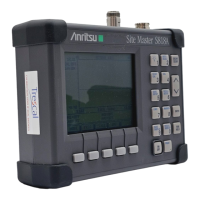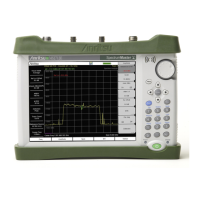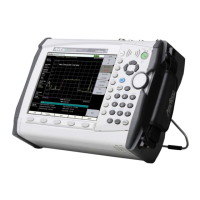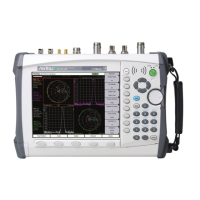S331L UG PN: 10580-00321 Rev. M 7-3
Calibration 7-2 Calibration Methods
7-2 Calibration Methods
The instrument must be re-calibrated whenever the internal
instrument temperature exceeds the calibration temperature window
(±20 ºC) or when the test port extension cable is removed or replaced.
Unless the calibration type is Flex Cal, the instrument must also be
re-calibrated every time the frequency range changes.
For all measurement types other than the Transmission (Ext. Sensor),
the instrument can be manually calibrated with an external precision
OSL (Open-Short-Load) calibration tee/discrete components or with the
standard internal InstaCal. The benefit of the InstaCal module is that it
is much faster, requires no connection changes, and eliminates the need
to use three different terminations (open, short, load) for calibration.
The trade-off is that the specified corrected directivity is 38 dB instead
of 42 dB.
For transmission measurements with an external sensor, a different
calibration method is used – Transmission (Ext. Sensor). For this
method, a normalization process is used to calibrate the frequency
response of the sensor and any test port cables/adapters used. The
calibration method uses the sensor itself and does not require any
additional components. An optional zeroing step is performed to remove
any residual noise in the sensor, and then, a normalization step is
performed by connecting the sensor directly to the port (or test port
cables).
To support both types of measurements (1-port reflection and 2-port
transmission), the S331L provides a combined calibration method: OSL
+ Transmission (Ext. Sensor). Choosing this calibration method allows
the instrument to be calibrated for all the types of measurements that it
supports. This enables the user to switch between multiple types of
measurements (Return Loss and Transmission, for example) without
having to recalibrate the instrument.
Note
For accurate results, the instrument must be calibrated before
making any measurements.

